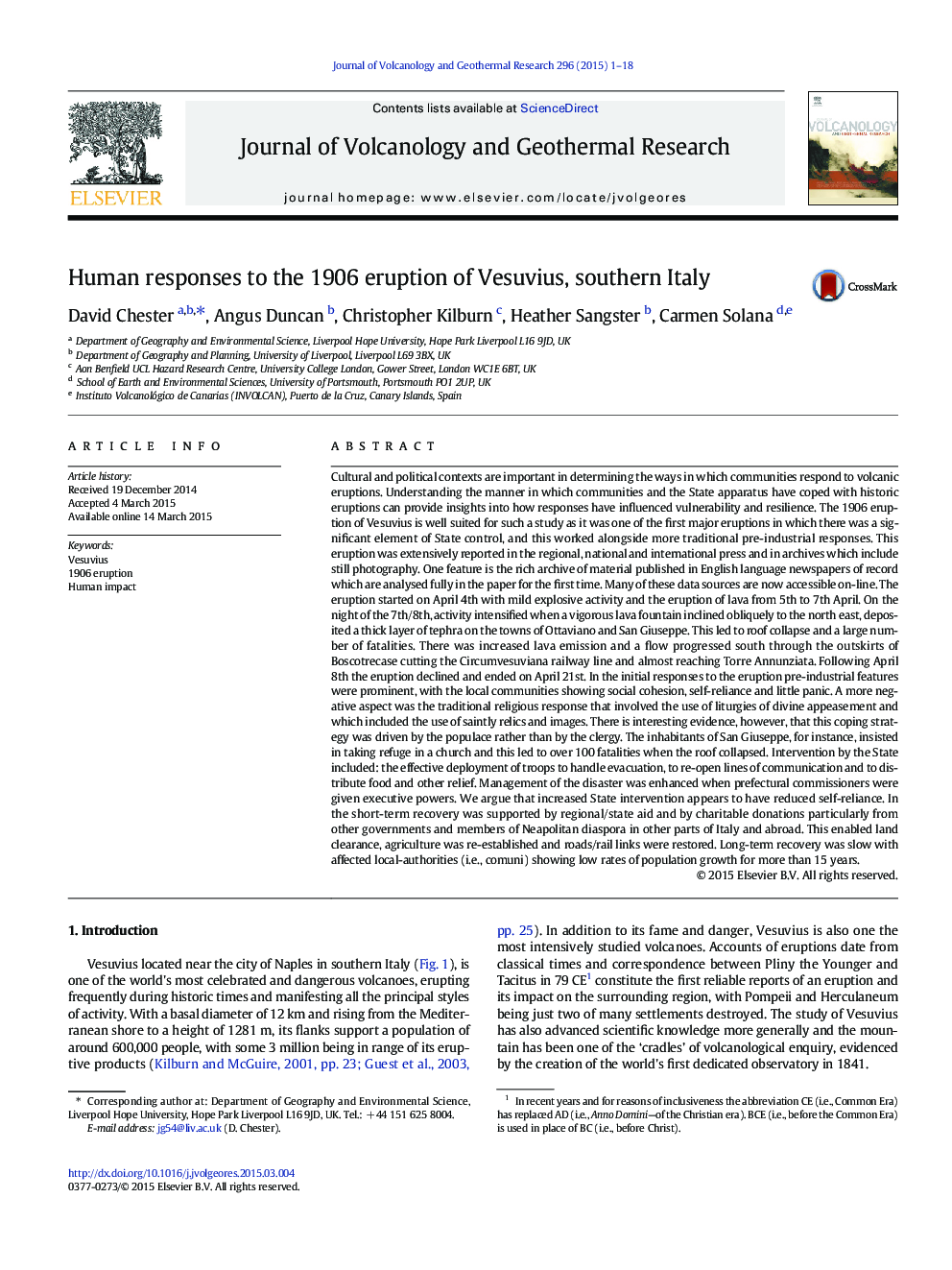| کد مقاله | کد نشریه | سال انتشار | مقاله انگلیسی | نسخه تمام متن |
|---|---|---|---|---|
| 4712345 | 1638326 | 2015 | 18 صفحه PDF | دانلود رایگان |
• Human impact of the 1906 eruption reconstructed using archival sources
• Eruption successfully handled by a combination of traditional (local) and State-based responses
• Responses
• Effective short-term recovery
• Slow long-term recovery
Cultural and political contexts are important in determining the ways in which communities respond to volcanic eruptions. Understanding the manner in which communities and the State apparatus have coped with historic eruptions can provide insights into how responses have influenced vulnerability and resilience. The 1906 eruption of Vesuvius is well suited for such a study as it was one of the first major eruptions in which there was a significant element of State control, and this worked alongside more traditional pre-industrial responses. This eruption was extensively reported in the regional, national and international press and in archives which include still photography. One feature is the rich archive of material published in English language newspapers of record which are analysed fully in the paper for the first time. Many of these data sources are now accessible on-line. The eruption started on April 4th with mild explosive activity and the eruption of lava from 5th to 7th April. On the night of the 7th/8th, activity intensified when a vigorous lava fountain inclined obliquely to the north east, deposited a thick layer of tephra on the towns of Ottaviano and San Giuseppe. This led to roof collapse and a large number of fatalities. There was increased lava emission and a flow progressed south through the outskirts of Boscotrecase cutting the Circumvesuviana railway line and almost reaching Torre Annunziata. Following April 8th the eruption declined and ended on April 21st. In the initial responses to the eruption pre-industrial features were prominent, with the local communities showing social cohesion, self-reliance and little panic. A more negative aspect was the traditional religious response that involved the use of liturgies of divine appeasement and which included the use of saintly relics and images. There is interesting evidence, however, that this coping strategy was driven by the populace rather than by the clergy. The inhabitants of San Giuseppe, for instance, insisted in taking refuge in a church and this led to over 100 fatalities when the roof collapsed. Intervention by the State included: the effective deployment of troops to handle evacuation, to re-open lines of communication and to distribute food and other relief. Management of the disaster was enhanced when prefectural commissioners were given executive powers. We argue that increased State intervention appears to have reduced self-reliance. In the short-term recovery was supported by regional/state aid and by charitable donations particularly from other governments and members of Neapolitan diaspora in other parts of Italy and abroad. This enabled land clearance, agriculture was re-established and roads/rail links were restored. Long-term recovery was slow with affected local-authorities (i.e., comuni) showing low rates of population growth for more than 15 years.
Journal: Journal of Volcanology and Geothermal Research - Volume 296, 15 April 2015, Pages 1–18
